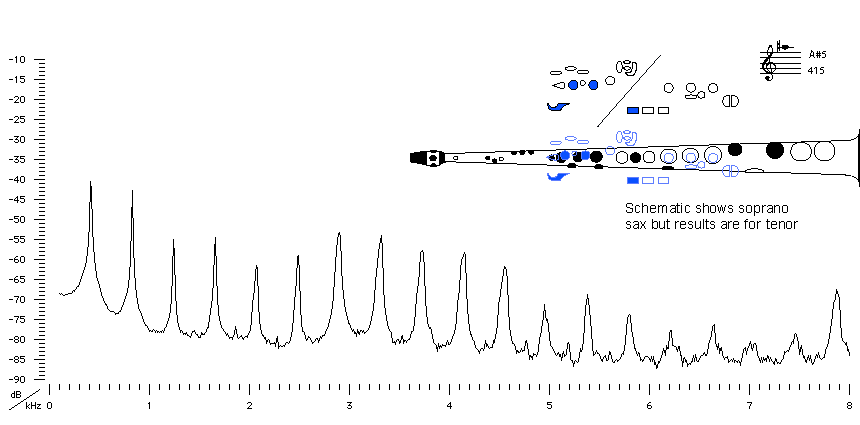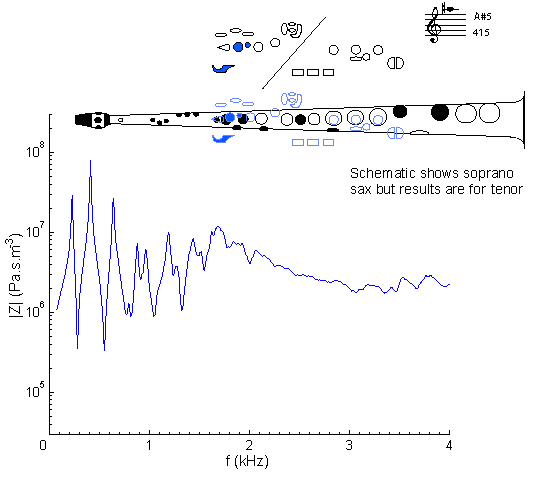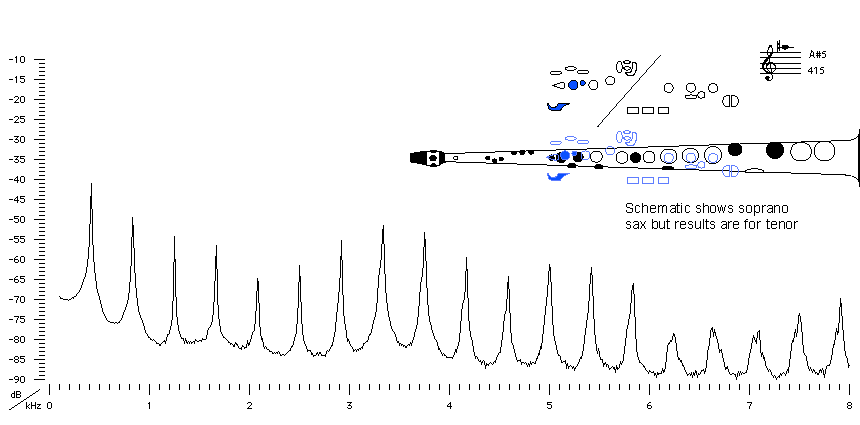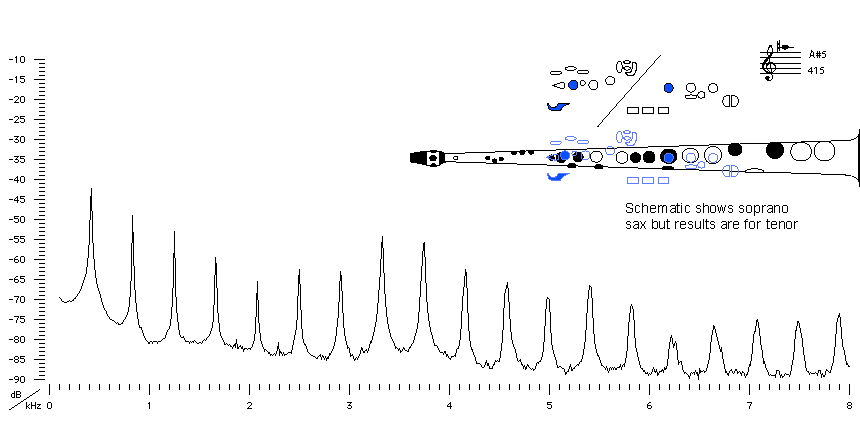| Acoustics of the saxophone |
Bb tenor saxophone |
A#5 |

|
Fingering Acoustic schematic Non-specialist introduction
to acoustic impedance Notes are the written pitch. |
This is the eighth note in the second register. It differs from A#4 (the corresponding note in the first register) in that it uses a register hole. This causes a leak in the bore that weakens the first impedance peak, but has little affect on higher peaks – see register hole for an explanation, and compare with A#4, whose impedance spectrum is almost identical except for the first peak. Above about 1 kHz, the third peak is weakened and the rest of the curve is irregular: see the discussion in cut-off frequency. This is the second lowest note to use the first register hole (a small hole, but not the one near the mouthpiece). The saxophone has an automatic octave key.
Compare with the impedance spectrum for a soprano sax on written A#5: same fingering but sounding one octave higher.

Sound spectrum
of a Bb tenor saxophone
played using fingering for A#5.
For more explanation, see
Introduction to saxophone acoustics.
Alternative Fingering |
tenor saxophone |
 |
Fingering Acoustic schematic Non-specialist introduction
to acoustic impedance Notes are the written pitch. |

2nd alternative Fingering |
tenor saxophone |
 |
Fingering Acoustic schematic Non-specialist introduction
to acoustic impedance Notes are the written pitch. |

|
Contact:
Joe Wolfe
/ J.Wolfe@unsw.edu.au |